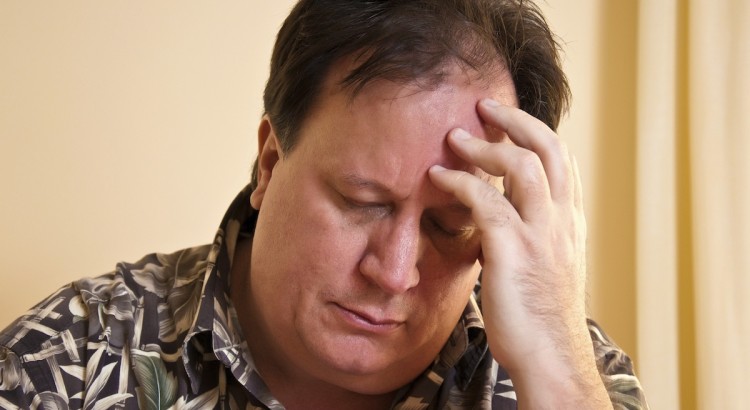People in Opioid Detox Prone to Abusing Other Drugs, Study Finds

People in detox treatment for opioid abuse are more than twice as likely to misuse other types of medication such as prescription stimulants, prescription sedatives and tranquilizers than alcoholics undergoing detox, a new study finds.
In combination with problematic opioid intake, the misuse of these other types of medications can significantly increase the risks for serious, severe or potentially fatal drug reactions. In a study published in late 2014 in The American Journal on Addictions, a team of American researchers used a small-scale project to estimate just how often people taking part in a phase of opioid treatment called detoxification continue to abuse other medications.
Non-Opioid Medication Abuse
In the U.S., opioid painkillers are the single most commonly abused class of prescription medication. Figures compiled by the federal Substance Abuse and Mental Health Services Administration for 2013 indicate that 1.7 percent of all Americans over the age of 11 abuse an opioid medication on a monthly basis. Three other classes of medication are also abused relatively frequently: tranquilizers (a specific form of sedative-hypnotic medication), prescription stimulants and sedatives (another form of sedative-hypnotic medication). About 0.6 percent of all American preteens, teenagers and adults are monthly abusers of some sort of prescription tranquilizer. A slightly smaller percentage of people in this broad age range (0.5 percent) abuse prescription stimulants. Roughly 0.1 percent of all preteens, teens and adults abuse a sedative medication on a monthly basis.
Broadly speaking, young adults between the ages of 18 and 25 have a statistically higher chance of abusing opioid and non-opioid medications than people in younger or older age groups. However, this fact does not preclude medication abuse in younger teenagers or in older adults. The overall rate of non-opioid medication abuse did not change much across the U.S. in the interval between the end of 2012 and the end of 2013.
Opioid Detoxification
Detoxification is the typical first step in substance treatment programs that promote abstinence from drug or alcohol use as their main goal. During detox, a person affected by symptoms of abuse and/or addiction stops using the substance responsible for causing his or her problems and experiences the gradual elimination of this substance from the body. Upon completing this process, the individual embarks on an initial pattern of abstinence and receives medication-based and/or therapy-based treatment designed to reinforce abstinence and set the stage for the assumption of a substance-free lifestyle. Opioid detoxification is similar to the process that takes place in any abstinence-based treatment program. Like any other person who goes through detox, a person affected by opioid dependence/addiction must typically cope with prominent symptoms of substance withdrawal.
Frequency of Non-Opioid Abuse
In the study published in The American Journal on Addictions, researchers from Harvard University-affiliated Massachusetts General Hospital and Andrew House Detoxification Center used information collected from 192 people receiving substance treatment to help estimate how often people going through opioid detoxification abuse a non-opioid prescription medication. One hundred sixty-two of the study participants were in the first stages of treatment for opioid dependence/addiction; the remaining participants were in the first stages of treatment for alcohol dependence (alcoholism). The researchers asked the members of both groups to provide details about their legitimate consumption and abusive intake of five types of non-opioid medication: the amphetamine salts that form the basis of certain prescription stimulants, the hypertension medication clonidine, the sedative-hypnotic clonazepam (Klonopin), the nerve pain and seizure medication pregabalin (Lyrica) and the nerve pain and seizure medication gabapentin.
All told, 36 percent of the study participants in detoxification for opioid dependence/addiction abused at least one of the medications in question. The researchers found that over a quarter of the opioid patients (28 percent) abused a non-opioid medication for which they held a valid prescription. When they compared the level of non-opioid medication abuse between the opioid patients and the patients receiving alcohol detoxification, they concluded that the opioid patients were more than twice as likely to engage in inappropriate medication intake.
Some of the medications targeted by the researchers are capable of producing addiction problems separate from any considerations of opioid intake. However, the researchers concluded that the study participants going through opioid detoxification had essentially equal chances of abusing an addictive medication like amphetamine salts and a non-addictive medication like clonidine. For this reason, they believe that the staff members of opioid programs should probe all forms of medication misuse in their clients/patients, not just the misuse of potentially addictive substances.
Article Categories
- 12 Steps
- Addiction in the Family
- Addiction Infographics
- Alcohol Addiction
- Articles
- Drug Addictions
- Drug Rehab Center News
- Helpful Articles
- Holidays & Substance Abuse
- Mental Health & Addiction
- Real Life Addiction Stories
- Recovery Testimonials
- Relapse Prevention
- Substance Abuse Prevention
